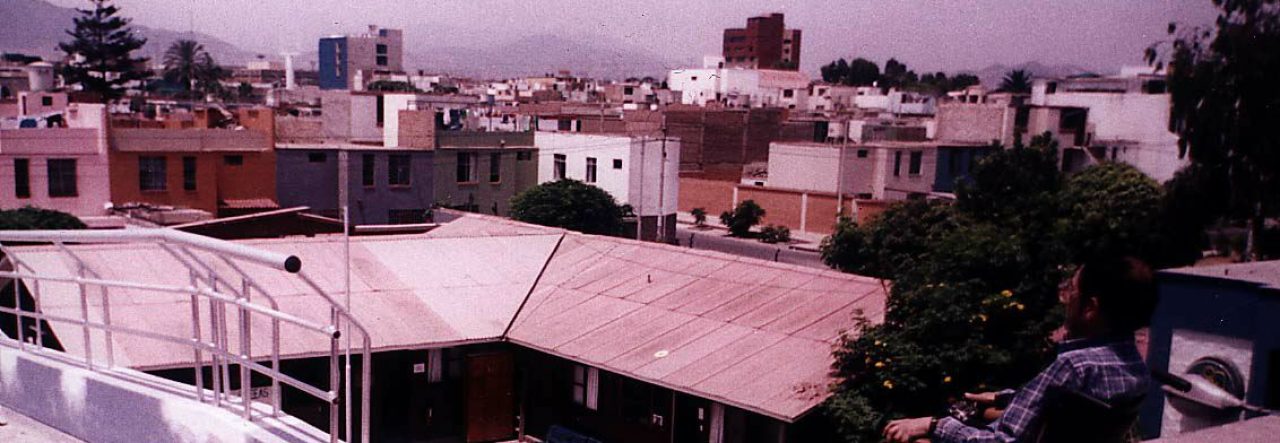A las personas que escuchan, grabamos este episodio hace más de un mes, pero me pasó mucho tiempo preparándolo para poder poner en el blog. Grabamos otro pronto para dar más noticias de lo que hablamos aquí. Gracias, — Matt
Dear listeners, we recorded this episode more than a month ago, but it took me a long time to prepare it for posting on the blog. With will record another one soon with more updates! — Matt
Below is a loose transcription:
Matt: We were going to speak more about your life experiences in this second episode, but your country has been in the news lately. What can you tell us about the flooding rains that have affected your country, and what do you know about the situation of people with disabilities who live in the affected areas.
Julio: Peru has been affected by what NASA has called heavy rain in the northern part of the country and what journalists call the coastal El Niño. The ocean temperature, which should not exceed 22 degrees Celsius in the north of Peru, has been 5 degrees above that, which caused a lot of evaporation of ocean water, the formation of large clouds that proceeded to drop all their content on the high and low regions of the Andes mountains, causing the rivers and their tributaries that flow into the Pacific Ocean to flood cities and towns in their path toward the ocean, and large amounts of mud and stone to slide through ravines where townspeople had built their homes, which were destroyed in the path. The departments of Tumbes, Piura, La Libertad and Lambayeque in the north are flooded with great material loss, especially Piura, where in the last few days, the river of the same name flooded the department capital and put districs like Catacaos under water. The river had a discharge of 3,400 cubic meters per second.
In Lima, the mudslides, that mass of mud and rocks, increased the levels of the rivers Chillón, Huaycoloro and Rimac, to an average of 100 cubic meters, and sowed destruction in the districts of Carabayllo, Carapongo, Chosica, Huachipa, San Juan de Lurigancho and Punta Hermosa. The central highway is destroyed in many stretches, hundreds of people who lived on the riverbanks saw their whole life’s work destroyed in a matter of seconds. The rough waters of the Rimac destroyed buildings and bridges and left the capitol without water for days.
In Lima, due to the mudslides, the water supply was suspended in more than 26 districts, because the treatment plant of the Atarjea could not process the waters with high mud content and because the floodgates had to be closed to avoid major damage to the plant from the enormous rocks that were carried by The Talking River, as they call the Rimac. The capital had to form large lines in the water supply or in the fire protection pump in order to provide a little water. The housewives saw with astonishment how the prices of products that come from the affected regions, like sugar, rice and bananas, rose in the market.
The inconvenience of the lack of drinking water, the rise in the prices of food, or the rain in the capital of Peru are nothing compared to the tragedy thousands of compatriots in the north of the country are living through, who do not have anywhere to sleep, eat, get dressed and move on with their lives. Generous international help is somewhat alleviating the situation of the victims, and the task of rebuilding on safe ground is monumental and will take more than ten years. Our land is suffering in these moments, but history tells us that the spirit of the Peruvian grows with adversity. We will rise; we only hope that this time it will be with previsions and planning.
On TV they have only showed the rescues of the elderly and the blind in the north; and in Lima, I have only caught on television, as if it were a painting, the remains of a wall of a house, carrying a folded wheelchair along the waters of the Rimac River. What could have happened to its user? I only hope that the people in wheelchairs who lived close to the riverbed were rescued on time.
What do you think, Matt, about Spinraza, which is being given to children with SMA I in your country? Do you know any children in your area who are receiving this costly treatment for free, and what positive changes are they observing? People like you and me, who have SMA I and II — is there any hope for us with this drug?
Matt: Well, that remains to be seen. I have an appointment with the neurologist next week and will let you know what he says. As far as the children we were discussing before the show, with the video of the young child, with SMA II I believe, walking, yes I know them. Those are the children of the founder of Stop SMA in Jackson, Mississippi. I’ve been to most all their funding events since they were formed when their first child was born. And my brother was a member of their organization.
It is like a miracle to see all of this happening. Just five years ago, I remember always thinking, “People are always talking about a cure or a treatment or what have you, but it is a long way off.” It just wasn’t a reality for me then. To see it unfolding like it is, with SMA I children living longer and SMA II children walking around, it is truly a miracle.
What remains to be seen is the cost and the insurance. With the drug costing hundreds of thousands per year, I’m sure there will be hurdles.
